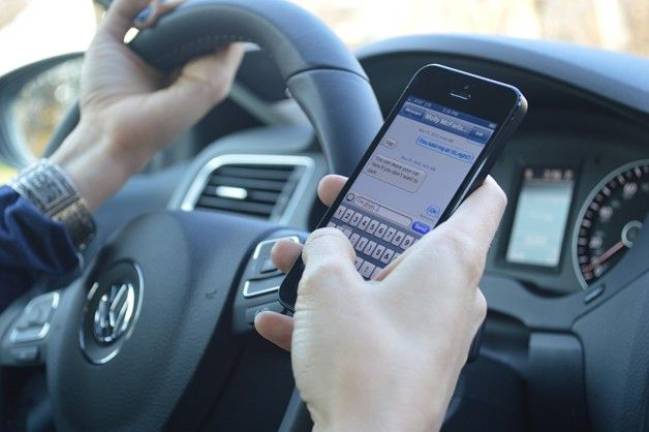Tighter ‘texting while driving’ laws could spell trouble for phone-addicted motorists

To the Editor:
New laws in states like Florida are seeking to make texting while driving a primary offense. This means that police officers will be able to pull over motorists if they see them texting.
Currently, texting while driving is a secondary offense in most states, so police officers can’t pull you over for that offense alone. These new texting-while-driving regulations could help prevent accidents, but it can also lead to costly tickets for those who don’t obey the law.
A recent study found that one out of four drivers were on the phone right before an accident.
Reaction times for texting drivers are 35 percent slower than the reaction times of focused drivers. Meanwhile, drunk drivers have a 12 percent slower reaction time. This does not mean that drunk driving is safe — however, it does show how dangerous texting while driving truly is.
To that end, many companies have created hands-free technology that can help drivers safely perform tasks while driving. However, a new study has found that not all voice-activated tools are created equal.
The study, which was led by the AAA Foundation of Traffic Safety, found that Google Now significantly outperformed Siri and Cortana when it came to safely making a phone call or sending a text message while driving. The best cars for voice-activation technology and safety were Chevy Equinox, Buick LaCrosse, and Toyota 4Runner, and the worst was Mazda 6.
The AAA study helps illustrate the fact that just because is something is hands-free does not mean that it is safe. The research found that people could be distracted for the length of up to three football fields as they fiddled with their smartphones or their car’s GPS. That is a significant distance especially as the drivers were going 25 mph.
The reality is that we still have not truly found a safe way to text and use our phones while driving, even with voice-activation. However, we know that drivers are going to continue using their devices behind the wheel. Currently, it’s a scary problem without a concrete solution, but hopefully advancements in technology can make hands-free options safer and easier to use down the line.
Karl Volkman, CTO
SRV Network